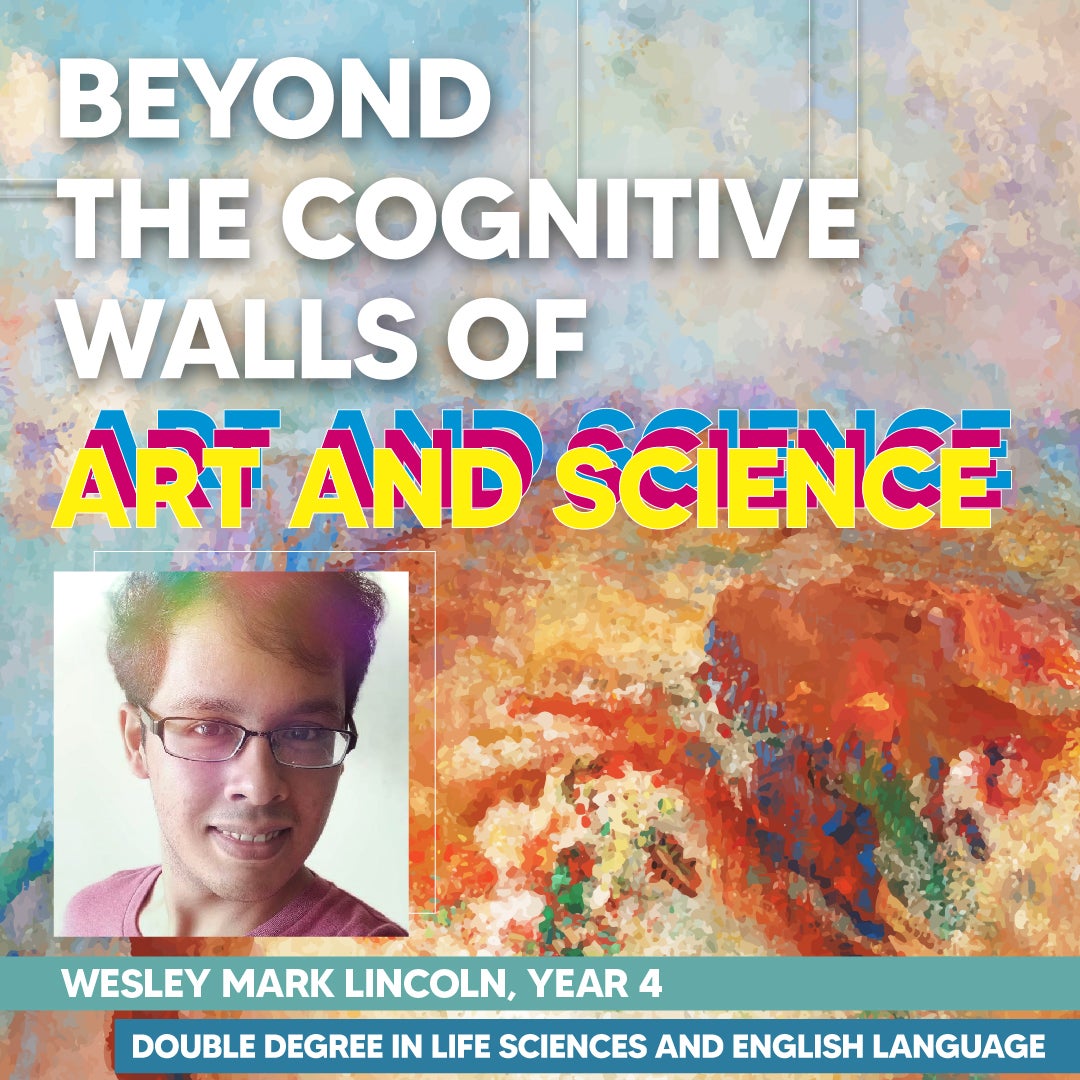Beyond the cognitive walls of art and science
September 23, 2021

Traditionally, art and science were perceived as two separate disciplines. But when they are studied together, the impact one has on the other becomes clear.
This has been Wesley Mark LINCOLN’s experience. The Year 4 student is currently reading a double degree in Life Sciences and English Language.
He says, “Evolution by natural selection is a useful model for understanding language variation and change. The difference is that, instead of natural selection, it is societal perceptions that decide which language variants are more likely to be favoured and replicated.”
He is passionate about these two subjects, but it is not without its challenges. He had to read twice the number of modules - two vastly different majors meant there was no overlap of modules. Add to that his Minors in Language Studies (Thai) and Sociology, and Wesley has a heavy workload, up to 32 MCs (modular credits) in his most hectic semester.
His double degree has enabled Wesley to look beyond the cognitive walls of art and science. This has sparked a fire to pursue academia when he graduates, so that he can continue pushing the boundaries of knowledge.
He says, “Being able to read contrasting disciplines can train us for niche job markets - but more importantly, it cultivates holistic and multifaceted modes of thinking. For instance, the interpretative skills associated with the arts and the quantitative acumen of the sciences are not opposing but complementary ways of thinking that help us make sense of our complex reality.”
Wesley has this advice for new students. “Even if it’s a novel field or not your strong suit, university is the time for intellectual exploration. You can always balance difficult modules with the ones that you are more comfortable with.”

